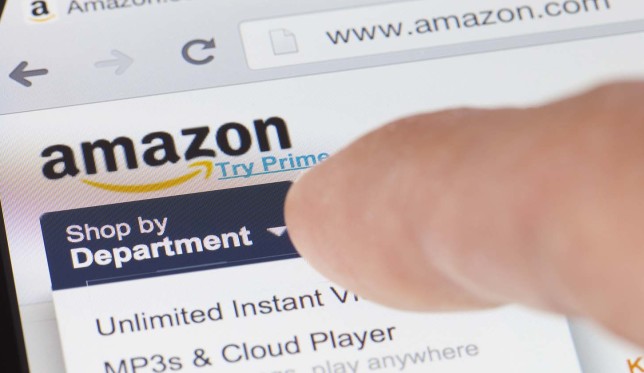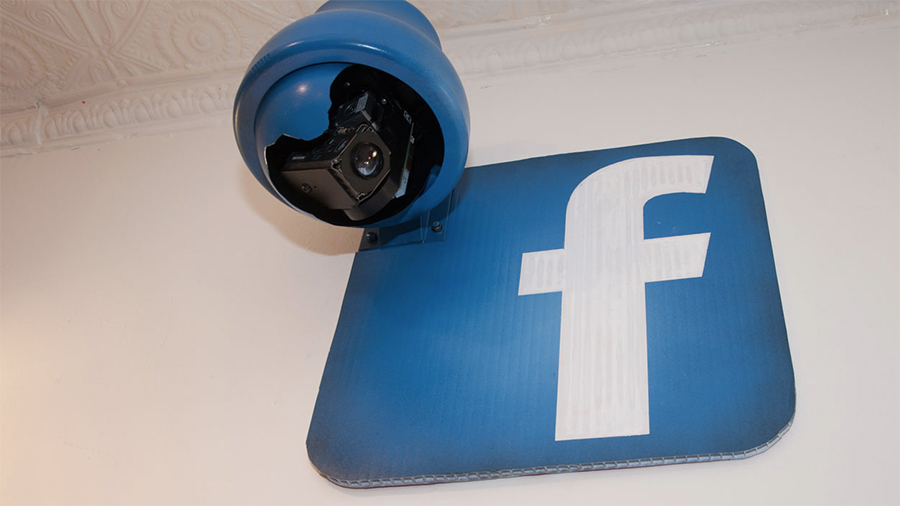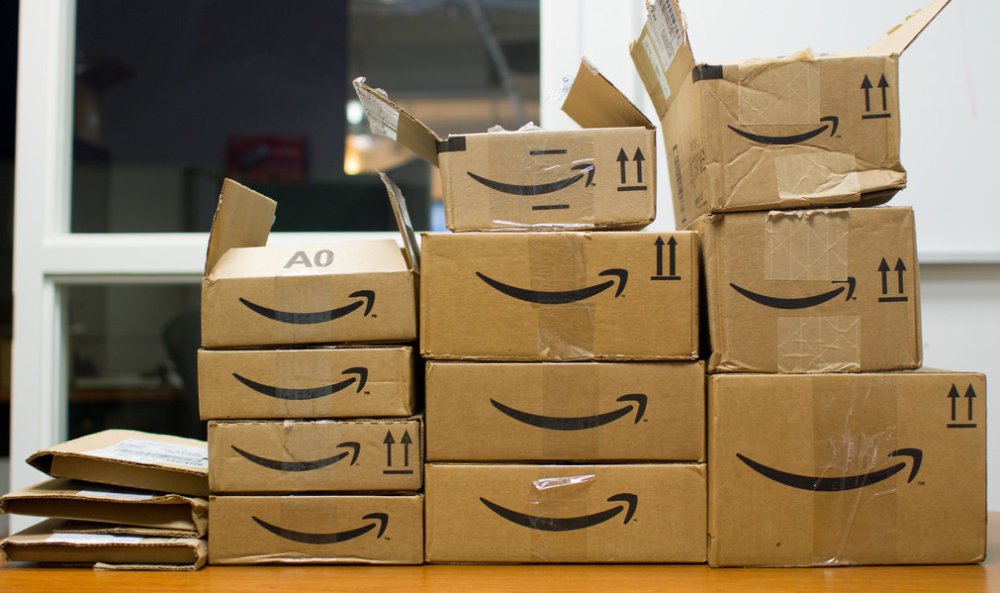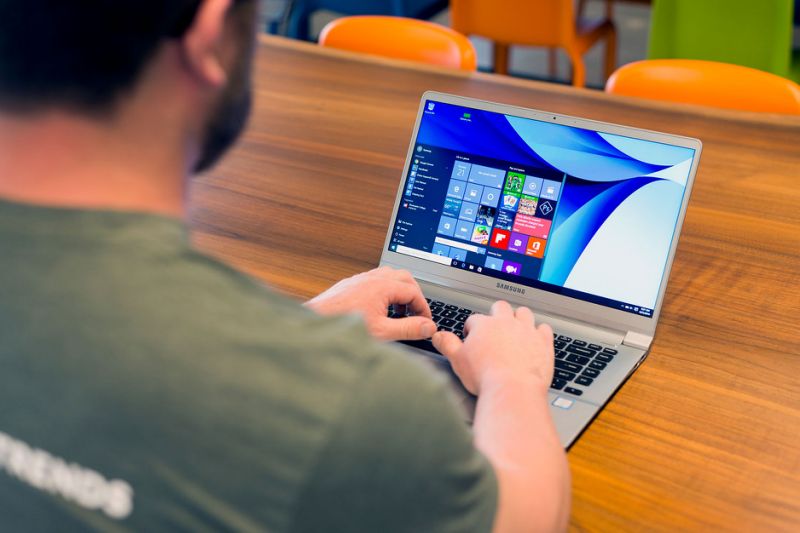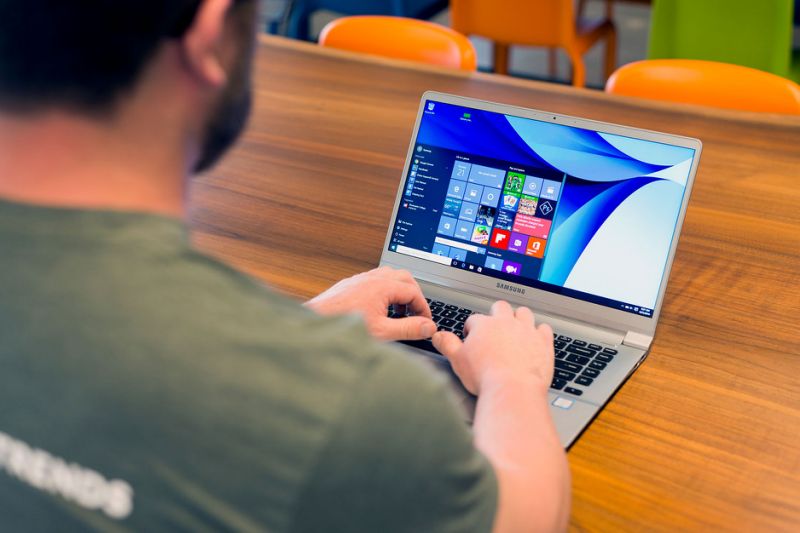-
Posts
7,282 -
Joined
-
Last visited
-
Days Won
2,416
Content Type
Forums
Blogs
Events
Resources
Downloads
Gallery
Store
Everything posted by allheart55 Cindy E
-
Congratulations Dougie!
-
That's interesting, do you think that FakeSpot is not in itself trustworthy?
- 4 replies
-
- as advertised
- online retailer
-
(and 1 more)
Tagged with:
-
Here’s why you should keep track of hacks and breaches and not re-use passwords: because even the king of the modern internet isn’t immune from account takeovers… and if he’s not, you’re not either. We’re going to go ahead and assume that Mark Zuckerberg knows how to keep his Facebook account secure. He founded the service 12 years ago, after all, and still runs the company today. But Zuck, like many of us, has multiple social media accounts — not just Facebook. He’s on Pinterest and Twitter, too (and Instagram, of course). As one does. And also as millions do, he apparently re-uses old passwords for some of those accounts. And how do we know that? Because some enterprising hacker, accessing all that recently-leaked data from the 2012 LinkedIn hack, helped themselves to Zuck’s login credentials and went and stole all his (non-Facebook) social accounts this weekend. As VentureBeat points out, Zuck isn’t exactly a heavy user of non-Facebook accounts. He hasn’t tweeted since 2012, and his Pinterest account boasts a whopping four pinned items. So it’s easy to see how maybe he’d forget about them, or their passwords. But let this be a reminder to us all: passwords, even for accounts you haven’t used in half a decade or forgot existed, are still valuable tools, in the wrong hands. Change yours. Often. To things that don’t suck. Mark Zuckerberg’s Twitter and Pinterest accounts hacked, LinkedIn password dump likely to blame [VentureBeat]
-
- account takeovers
- breaches
-
(and 2 more)
Tagged with:
-
Nearly every online retailer has some kind of user review system that allows people to offer public feedback on what they bought, whether it was as advertised, and whether it was worth it. This deters sellers from scamming innocent customers. But what about fake reviews? They certainly exist and they can be hard to spot, especially on Amazon where fake reviews are rampant. No matter how observant and smart you think you are, you’ve probably fallen for a few before. And no, just because a reviewer has “Verified Purchase” next to their name doesn’t mean that their review is genuine! Sellers now hire people to buy items and post fake reviews, which in turn deceives people like you and me into thinking that certain items are better than they really are. They influence us to spend money on things we shouldn’t buy and that ends up hurting our wallets in the long run. That’s why you need to start using Fakespot, a website that checks an Amazon product page and grades the user reviews based on how “fake” they seem. All you need to do is copy-paste the product page URL. That’s it. So the next time you’re looking at user reviews on Amazon, run it through Fakespot and see if you can trust what they’re saying. Fakespot isn’t perfect, but it can give you a good idea of what you’re dealing with. Want to save even more money? Check out our tips for being frugal while loving tech and gadgets. Source: makeuseof
- 4 replies
-
- as advertised
- online retailer
-
(and 1 more)
Tagged with:
-

Typical German Shepherd
allheart55 Cindy E replied to allheart55 Cindy E's topic in Tech Help and Discussions
My Shepherd is exactly like this one. :big_ha: -
Typical argument with a German Shepherd! "I found it, I want it, it's mine!" https://www.facebook.com/TheGSDC/videos/vb.131817526895342/955355147874905/?type=2&theater
-

Cindy's Photo's
allheart55 Cindy E replied to allheart55 Cindy E's topic in Tech Help and Discussions
I happened to mention to Dougie about the mosquito bites on Caity earlier today while we were on Skype. He surprised me. He was kind enough to fix them with Photoshop. Thank you, Dougie!! You're awesome! -
-

Cindy's Photo's
allheart55 Cindy E replied to allheart55 Cindy E's topic in Tech Help and Discussions
-

Cindy's Photo's
allheart55 Cindy E replied to allheart55 Cindy E's topic in Tech Help and Discussions
-
Prominent Windows PC makers, including Acer, Hewlett-Packard and Lenovo, have made "egregious" omissions in the software updaters they bundle with notebooks that leave customers at risk from attack by cyber-criminals, a security firm contended. Earlier this week, Duo published a report detailing an examination of 10 Windows laptops from five OEMs (original equipment manufacturers) -- Acer, Asus, Dell, HP and Lenovo -- that focused on the software updating tools the vendors pre-loaded on their machines. Those updaters are used to keep the proprietary and third-party software bundled with new PCs up to date. OEMs rely on the updaters to refresh device drivers and their own support tools, as well as the in-house and third-party applications pre-installed on new systems. The latter is known by a slew of derisive labels, including "bloatware" and "crapware," because they're often low-value applications that OEMs are paid to pack on the drive. But the lack of manifest signing was the key, according to Darren Kemp, a Duo security researcher. "The manifest drives the updates," Kemp said. "[Only one] was signed at all. If the OEMs had implemented this properly, it would have stopped almost every attack. 'Egregious' really is the word to describe [the OEMs' failures.]" Duo found security flaws in every one of the updaters it looked at, and with the lack of encryption and manifest signing, judged exploiting those vulnerabilities as trivial, or in the words the company used in a supporting blog post written by Kemp, "The level of sophistication required to exploit most of the vulnerabilities we found is somewhere between that possessed by a coffee stain on the Duo lunch room floor and your average potted plant." Manzuik's and Kemp's best advice for buyers of new crapware-infested PCs was to immediately wipe the device's drive and re-install a clean copy of Windows. While that is standard practice for enterprises -- which install a company-approved image -- many consumers and smaller businesses find that difficult. In lieu of a clean install, Duo recommended that users uninstall the unwanted software, including the updaters. Microsoft touts its Signature line of PCs -- OEM notebooks and desktops that have no or little bloatware -- as a way to circumvent the problem. But of the three Signature-branded notebooks examined, one each from Asus, Dell and HP, Duo found that all still included the flawed updaters. Source: computerworld
-
- cyber-criminals
- updating tools
-
(and 1 more)
Tagged with:
-
-
-
Facebook announced in recent weeks that they’re expanding their advertising empire. With that change, came a stealthy new privacy setting for users — one that all of us are opted-in to by default. Instead of just selling ads on Facebook, or on Facebook platforms (like WhatsApp and Instagram), Facebook is now selling ads everywhere, to everyone, whether or not you have a Facebook account. If you do have a Facebook account, though — like 1.6 billion other humans do — Facebook will also use your Facebook data to sell those ads. Here’s where the privacy settings come in: Facebook has long had opt-outs for collecting and using your behavioral data in advertising to you. But they added or re-worded one when they broadened their advertising business this week, and every member of Facebook is set to participate in this new one unless you specifically go and opt out. So here’s a step-by-step guide to doing that: Step 1: Click the little lock in the top-right corner of your screen, and select “See More Settings” That’s for web Facebook. If you’re on the Android app, go to the three-bar “hamburger” menu icon on the right and then scroll all the way down until you see “Account Settings” near the bottom. If you’re on the iOS app, choose “More” on the bottom right and then scroll until you see “Account Settings” there. Step 2: Down the left-hand side of the screen (or in your app settings), go to “Ads” near the bottom: Step 3: You can set any of these to “yes” or “no” as you wish, but the new option that you’ll find yourself automatically signed up for is under “Ads on apps and websites off of the Facebook Companies.” The full setting looks like this, and you can turn that “yes” to “no” to opt out: If you click to read all about the new setting, here’s what it says in full: You cannot, however, opt out of being advertised to, nor out of having your data collected and aggregated. This setting just treats you as a non-FB user for the purpose of having advertising selected for you on non-FB sites. Source: consumerist
-
- advertising
-
(and 3 more)
Tagged with:
-

Recover Windows 10 Product Key From BIOS/EFI?
allheart55 Cindy E replied to mikehende's topic in Tech Help and Discussions
Sounds good to me....:thumbsup: -

Recover Windows 10 Product Key From BIOS/EFI?
allheart55 Cindy E replied to mikehende's topic in Tech Help and Discussions
I have used it on both the BIOS as well as UEFI. I haven't had any problems with it. -

Recover Windows 10 Product Key From BIOS/EFI?
allheart55 Cindy E replied to mikehende's topic in Tech Help and Discussions
Unfortunately, we don't very often have the luxury of clients keeping a detailed record such as you describe. As for Magical Jelly Bean, that won't work on the newer operating systems and according to this, you would have to strap the drive to a bootable windows machine in order to retrieve the key. Mike is looking for a simpler method. -

Recover Windows 10 Product Key From BIOS/EFI?
allheart55 Cindy E replied to mikehende's topic in Tech Help and Discussions
That's fine if the computer is bootable but we were talking about worse case scenario. When Mike has an unbootable computer that he is working on and needs to reinstall the OS. -
Months after filing several lawsuits to block companies from selling fraudulent positive reviews on its site, Amazon is now turning its focus to those that purchase the fake reviews, taking action against one company and two individuals who sell on the e-commerce site. The Seattle Times reports that Amazon recently filed three cases with the American Arbitration Association, accusing third-party sellers — a California man, another man from Pennsylvania, and a Chinese company called CCBetter Direct — of creating or paying for fake reviews of their products. According to Amazon, anywhere from 30% to 45% of the total reviews for these sellers’ products are fake. Amazon contends that the sellers use one of two methods to raise the profile of their products on the site: create their own positive reviews by way of fake accounts, or pay others to praise their products. With the cases, Amazon is seeking to ban the sellers from using its site to peddle their products or accessing Amazon services in the future. The complaints also ask for the profits the sellers made on the site, attorneys’ fees, and damages exceeding $25,000, TechCrunch reports. While Amazon has previously said it had filed lawsuits against more than 1,100 people who posted fake reviews for cash and began suing companies offering such reviews in April 2015, the company is attempting to get at the root of the problem by targeting merchants to pay for the reviews. “Our goal is to eliminate the incentives for sellers to engage in review abuse and shut down this ecosystem around fraudulent reviews in exchange for compensation,” the company said in a statement. Amazon steps up pursuit of merchants who pay for fake reviews [The Seattle Times] Amazon sues sellers for buying fake reviews [TechCrunch]
-
- amazon
- e-commerce
-
(and 2 more)
Tagged with:
-
If you’re still putting off your upgrade to Windows 10, the end is nigh. That’s because the free update period for the operating system is quickly approaching: If you don’t make the move before it’s up, you’ll shell out $120 to $200 you otherwise didn’t have to spend. Since making the operating system available last year, Microsoft has been encouraging people to upgrade to Windows 10 to meet its goal of getting the OS on 1 billion devices by 2017. That means millions of people have been getting that nagging little pop-up in the lower right corner of their computer screens telling them to download Windows 10. But since most people would rather get their teeth drilled than update their computers, a slew of Windows users have yet to upgrade to Windows 10. Unlike Apple, which lets you update OS X free of charge whenever you want, Microsoft set a July 29 deadline for when you can upgrade to Windows 10 for free. So what happens if you miss the deadline? You’ve still got options, but you’ll need to reach for your wallet. For people looking for Windows 10 Home, you’ll be able to purchase or download the OS for $120 plus tax. If you want Windows 10 Pro, you’ll have to pay $200. If you updated to Windows 10 Home for free, but want to get Windows 10 Pro, you can upgrade for $100. Outside of forking over your cash for Windows 10 after the deadline, there isn’t anything you can do to update your PC. But once you do make the switch, Microsoft says you’ll get free updates for the lifetime of the operating system, which is standard operating procedure for every version of Windows. Unfortunately, there’s still no word as to whether that annoying Windows 10 upgrade pop-up window will go away once the July 29 deadline passes. Here’s hoping it does. Source: yahootech
-
- 1 billion
- free update
-
(and 2 more)
Tagged with:
-
Samsung is warning users against updating their PCs to Windows 10, as the company’s drivers aren’t up to the task. According to Samsung’s support team, its computers’ do not fully support Microsoft’s newest operating system, which Microsoft has been pushing hard and encouraging people to update to. The advice from the Korean computer maker comes following a number of customers complaining about their Samsung computers not working after making the upgrade to Windows 10. The Register this week reported on the email sent by Samsung’s UK support staff to a customer. In the email, a support employee said Samsung is still coordinating with Microsoft to address the issue. “The Drivers that we have on our website are not yet compatible to the latest version of Windows,” the email read. “What we usually recommend is to keep the current Windows version and we’ll update you once the Windows 10 have no more issues on any Samsung laptops and computers or even monitors.” Ever since first announcing Windows 10, Microsoft has been warning manufacturers to get their drivers in order. Despite having nearly two years to do so, Samsung still isn’t ready. Related: Survey shows Windows 10 is popular and well regarded For the most part, if you are a Samsung user running Windows 8.1, you are unlikely to have any major issues with upgrading. The problem appears to arise more with users making the jump from Windows 7 to 10. Microsoft has not commented specifically on the matter, but is advising users to check Samsung’s Windows 10 page for information on whether or not their device is compatible. This hiccup isn’t ideal for Microsoft. The Redmond giant has been urging users to make the free upgrade to Windows 10 since it became available and the free upgrade option expires on June 29. After that you’ll need to fork over $119 to make the switch to the latest operating system. However, Samsung probably deserves more of the blame. Drivers are the responsibility of hardware manufacturers, not Microsoft. Not providing drivers for Windows 10 does Samsung’s customers a disservice, since it means they can’t upgrade to the newest OS. While adoption has been impressive for the most part, Microsoft has still been met with criticism over its nagging update notifications to users urging them to switch. Microsoft claims that there are more than 300 million devices globally now running Windows 10. Source: yahootech
-

Recover Windows 10 Product Key From BIOS/EFI?
allheart55 Cindy E replied to mikehende's topic in Tech Help and Discussions
It should work on Win 8 without a problem. -

Recover Windows 10 Product Key From BIOS/EFI?
allheart55 Cindy E replied to mikehende's topic in Tech Help and Discussions
I don't know, mike. I've never used it on Win 10, just 8.1. -

Recover Windows 10 Product Key From BIOS/EFI?
allheart55 Cindy E replied to mikehende's topic in Tech Help and Discussions
If that isn't working for you, Mike, try this one I have used it before and it works like a charm. -

Recover Windows 10 Product Key From BIOS/EFI?
allheart55 Cindy E replied to mikehende's topic in Tech Help and Discussions
You run it from the WinPE by launching it from command. (Shift + F10 at the Welcome screen)


